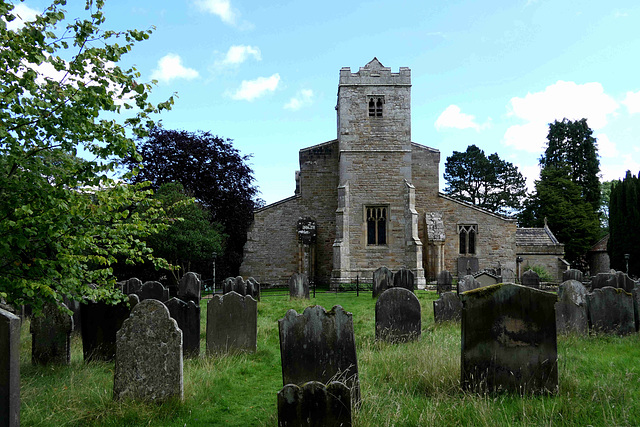Kirkdale - St Gregory’s Minster
Scarborough - St Mary
Hartlepool - St Hilda
Hartlepool - St Hilda
DE - Bendorf - Abtei Sayn
BE - Aubel - Altar der Abteikirche Val-Dieu
DE - Bendorf - Abtei Sayn
Kirche und Kloster St. Märgen
Il Chiostro della Basilica de Saò Francisco
Dorfkirche Stavenow
Happy (Wappen) Wall Wednesday!
Stavenow Kirche Interior
Greece - Kalamata, Ypapanti cathedral
Ordem Terceira Sao Domingos Church - Pelourinho -…
Greece - Mavrommati, Voulcanou Monastery
Mother Church of Our Lady of Conception.
Saint Sebastian Chapel.
Church of Mercy (17th century).
Greece - Kalamata, Church of the Holy Apostles
Chapel of Our Lady of Good Success.
Greece - Kalamata, Kalograion Monastery
Parish Church.
Flor da Rosa Monastery (14th century).
Saint Stephen Chapel (16th century).
Црква Светог Илије у селу Имљани
Ruta Romanica - Santa Maria de Palera
un chiostro variopinto
Carlisle - Cathedral
Nederland - Maastricht, Basiliek van onze Lieve Vr…
Church of Our Lady of Consolation.
Fussball . . . T O R ! ! !
Dom, SO-Portal
DE - Köln - Domblick
Bozouls
Nederland - Het Stift, Stiftskerk
St. Nikolai
Church of Mercy.
DSCN3254
DSCN3250
Romanik
San Sivestro, Bevagna (4 x PiP)
Nederland - Oldenzaal, Sint-Plechelmusbasiliek
Katharinenkirche um 18:24 Uhr...
Watermill.
Saint Anthony Chapel.
Location
Lat, Lng:
You can copy the above to your favourite mapping app.
Address: unknown
You can copy the above to your favourite mapping app.
Address: unknown
See also...
Keywords
Authorizations, license
-
Visible by: Everyone -
All rights reserved
-
100 visits
Lastingham - St. Mary


The first church on the site was part of a monastery founded in 654 by Æthelwald of Deira for his own burial.
Bede described how in 654, monks established a wooden monastery at Lastingeau, they established their house in "a fold of the Yorkshire Moors". St Cedd ruled the monastery as the first abbot until his death, combining this position with that of missionary bishop to the East Saxons. In 664, shortly after the Synod of Whitby St Cedd died.
St Cedd was at first was buried in the open air, but the monks eventually built a church around him. His brother St Chad took his place as abbot. St Chadd then moved to Lichfield and the relics and remnants of St Cedd's were removed and kept with those of his brother in Lichfield. Some of their bones are now entombed in Birmingham's Catholic Cathedral though St Cedd is believed to be mostly buried at Lastingham.
It is thought that the church was destroyed during the various raids in the area over the next 400 years, particularly by Danish invaders.
William the Conqueror gave permission for a new church to be built on the site in 1078, when Benedictine monks from Whitby, set up the new church. However, they only stayed for ten years before moving on to York, it was reasoned later that the remoteness of the abbey and the outlaw nature of the area forced them to relocate. The revival and reconstruction of the church has therefore been confined to a decade.
During the 13th century, arcades, bays and aisle in the north and south parts of the church were added. In the following century, the tower was erected and it was left for five centuries with little further work until 1879, when it was renovated and the whole church being re-roofed.
The three-aisled crypt is the main attraction and oldest part of the church, which was built from 1078 using components from the Anglo-Saxon period. The crypt was originally accessed via its own entrance on the north side of the church.
Bede described how in 654, monks established a wooden monastery at Lastingeau, they established their house in "a fold of the Yorkshire Moors". St Cedd ruled the monastery as the first abbot until his death, combining this position with that of missionary bishop to the East Saxons. In 664, shortly after the Synod of Whitby St Cedd died.
St Cedd was at first was buried in the open air, but the monks eventually built a church around him. His brother St Chad took his place as abbot. St Chadd then moved to Lichfield and the relics and remnants of St Cedd's were removed and kept with those of his brother in Lichfield. Some of their bones are now entombed in Birmingham's Catholic Cathedral though St Cedd is believed to be mostly buried at Lastingham.
It is thought that the church was destroyed during the various raids in the area over the next 400 years, particularly by Danish invaders.
William the Conqueror gave permission for a new church to be built on the site in 1078, when Benedictine monks from Whitby, set up the new church. However, they only stayed for ten years before moving on to York, it was reasoned later that the remoteness of the abbey and the outlaw nature of the area forced them to relocate. The revival and reconstruction of the church has therefore been confined to a decade.
During the 13th century, arcades, bays and aisle in the north and south parts of the church were added. In the following century, the tower was erected and it was left for five centuries with little further work until 1879, when it was renovated and the whole church being re-roofed.
The three-aisled crypt is the main attraction and oldest part of the church, which was built from 1078 using components from the Anglo-Saxon period. The crypt was originally accessed via its own entrance on the north side of the church.
Dimas Sequeira has particularly liked this photo
- Keyboard shortcuts:
Jump to top
RSS feed- Latest comments - Subscribe to the comment feeds of this photo
- ipernity © 2007-2025
- Help & Contact
|
Club news
|
About ipernity
|
History |
ipernity Club & Prices |
Guide of good conduct
Donate | Group guidelines | Privacy policy | Terms of use | Statutes | In memoria -
Facebook
Twitter

Sign-in to write a comment.